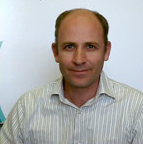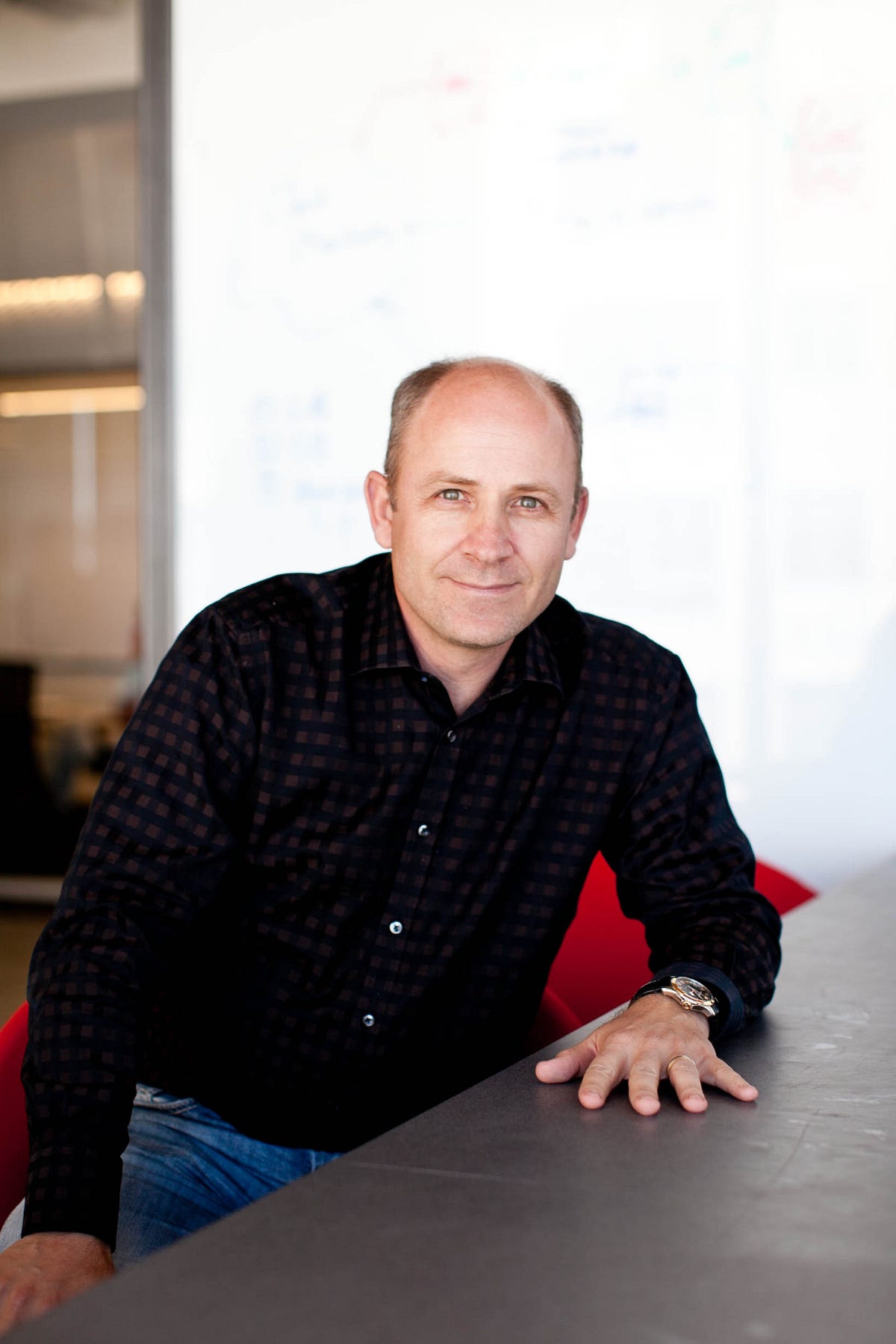New Relic, Inc.: How New Relic Revolutionized Application Performance Monitoring: The Journey of Founders Lew Cirne and John D. McDonald.

Company profile
Company business details
Motivation to build the product
The founders were motivated to start New Relic to address the challenges of monitoring web applications, particularly with the growing use of Java and Ruby on Rails technologies. They recognized the need for a self-service model that would allow customers to easily manage their application performance and gain deep visibility into their web applications.Problem that their product solves
New Relic solves the problem of inefficient software performance monitoring. Its end users include developers and businesses that need to track and optimize their applications effectively. Solving this problem is important for them as it enhances software reliability and improves user satisfaction, ultimately leading to better business outcomes.Their unfair advantage
New Relic's unfair advantage lies in its self-service model and comprehensive platform that provides deep visibility into application performance, making it more scalable and cost-effective compared to traditional enterprise software models.Strategies
Pre-Launch (Product Development & MVP)
Building a Software Product from Passion
Lew Cirne's journey into entrepreneurship began with his passion for building software, which was ignited at a young age when he received a Commodore Vic 20. He created his own versions of popular games like Space Invaders and Missile Commander, which laid the foundation for his love of software development. This passion led him to start a company with a friend to productize a board game into a computer simulation, although it did not succeed in the market. This early experience taught him valuable lessons about entrepreneurship and product development.
Targeted Hiring for Experience
Lew Cirne made a conscious decision to hire a more experienced employee base when starting New Relic. He aimed for individuals with 8-10 years of experience, as they were likely to be more effective with their time and less prone to burnout. This strategy was rooted in his understanding of the life stages of potential employees, who often had families and responsibilities that made them value efficiency. By setting these hiring standards before securing Series A funding, he ensured that the company culture would prioritize work-life balance and productivity from the outset.
Idea Validation through Networking
Lew Cirne, while developing his idea for Wily Technology, reached out to friends of his parents to gather initial funding. He sought $5,000 from each of them, leveraging personal connections to raise a total of $35,000 in the first week. This approach not only validated his idea through the interest of potential investors but also provided him with the necessary capital to start building his product.
Launch Stage
Leveraging Personal Experience for Product Ideation
While working at Hummingbird, Lew Cirne identified a problem he faced as a software engineer, which inspired him to create Wily. This experience of solving his own problem was pivotal in his entrepreneurial journey, as it led him to develop a product that addressed a real need in the market. This strategy of using personal experience to inform product development is a concrete action that helped him successfully launch Wily.
Implementing a Generous Vacation Policy
To foster a healthy work-life balance, Lew Cirne established a minimum three-week vacation policy at New Relic. He believed that a two-week vacation policy was insufficient, as it often forced employees to use their time off for non-vacation obligations. By encouraging employees to take their full vacation time, he aimed to help them recharge and return to work more productive. This policy was part of a broader cultural initiative to create a supportive environment that valued personal time.
Demo to Major Corporations
After developing the initial prototype of his product, Lew secured a demo opportunity with IBM. He prepared a presentation that emphasized the product's capabilities rather than relying heavily on PowerPoint slides. The demo was so compelling that it escalated through multiple layers of IBM's management, resulting in a $50,000 license agreement. This not only validated his technology but also established a significant partnership that would help propel Wily Technology forward.
Real-Time Analytics with NRDB
New Relic developed a cloud-based analytic database called NRDB, which allows for real-time analytics without the need for indexing. This innovation enables users to run ad-hoc queries on vast amounts of data quickly, providing insights that were previously time-consuming to obtain. For instance, a query that used to take a week can now be executed in just one second, allowing businesses to make timely decisions based on real-time data.
Growth Stage
Articulating Core Values to Foster Company Culture
At New Relic, Lew Cirne emphasized the importance of core values, which he believed should be discovered rather than declared. He communicated to his employees the idea of loving their Mondays, which meant enjoying their work and the people they worked with. This approach aimed to create a positive company culture where employees felt fulfilled and engaged. By sharing these values during new hire orientations and company meetings, he fostered a sense of belonging and purpose among his team.
Setting a Family-Friendly Work Culture
Lew Cirne emphasized the importance of family time by making it a norm to leave the office by 5 PM. He personally modeled this behavior, ensuring that he was home for dinner and family time. This approach was designed to create a culture where employees felt comfortable prioritizing their family lives without fear of judgment. By doing so, he aimed to attract talent that valued a balanced lifestyle, differentiating New Relic from other high-growth companies that often expected longer hours.
Encouraging Efficient Work Practices
At New Relic, Lew Cirne set high goals and aggressive objectives while resisting the urge to push employees into overdrive. He communicated the importance of efficiency and respect for personal time, making it clear that while hard work was expected, it should not come at the cost of personal well-being. This included refraining from contacting employees during weekends unless absolutely necessary, which reinforced a culture of respect for work-life balance and aimed to reduce burnout.
Cultural Reinforcement through Leadership Example
Lew Cirne understood that the behavior of leadership sets the tone for company culture. He actively reinforced the values of work-life balance and efficiency by leading by example. This included being mindful of when to reach out to employees and ensuring that the company’s core values were communicated during the hiring process. By attracting individuals who shared these values, he cultivated a team that was aligned with the company’s mission and culture.
Focus on Product Excellence
With the launch of New Relic, Lew Cirne aimed to create a company that prioritized product excellence over traditional sales-driven approaches. He decided to offer a software as a service model that allowed customers to manage their applications at a low monthly cost, targeting the lower end of the market. This strategy led to New Relic capturing 85% of the app performance management market in the Rails space within just eight months of launch.
Hiring Key Sales Leadership
To scale its sales efforts, New Relic hired Hilarie Koplow-McAdams, the former president of global sales at Salesforce.com. This strategic hire was aimed at accelerating growth by leveraging her experience to build a robust sales team capable of closing high-value deals. The company began to see significant success when it started closing million-dollar contracts over the phone, indicating a strong product-market fit.
Leveraging Customer Feedback for Product Development
New Relic continuously evolved its product offerings based on customer feedback and market needs. Initially starting with Ruby on Rails application performance management, the company expanded into other programming languages like Java, .NET, and PHP. This adaptability allowed New Relic to address a broader range of customer needs and stay relevant in a rapidly changing tech landscape.
Real-Time Business Insights for E-Commerce
New Relic recognized the need for e-commerce businesses to access real-time data on sales and customer interactions. By providing tools that allow businesses to measure performance metrics instantly, New Relic enabled companies to make informed decisions on the fly. This capability was highlighted when Cirne demonstrated a real-time dashboard to Rupert Murdoch, showcasing the immediate impact of software on business operations.
Maturity & Scaling
Hiring for Complementary Skills
As a founder, Lew Cirne recognized the importance of self-awareness in leadership. He learned to hire senior people who could take on responsibilities that he was not passionate about, allowing him to focus on his strengths in product creation and team motivation. This strategy of hiring exceptional talent to complement his weaknesses was crucial for scaling New Relic effectively, as it enabled him to build a strong leadership team that could drive the company forward.
Subscription-Based Revenue Model
New Relic adopted a subscription-based revenue model, which provided predictable cash flow and allowed for scalable growth. Unlike traditional enterprise software sales that relied on large upfront payments, New Relic's model enabled them to maintain a steady revenue stream, achieving 95% to 105% of cash projections every month. This approach not only reduced the need for a large sales force but also allowed for a more efficient scaling of the business.
Focus on Customer Experience and Product Usability
Cirne emphasized the importance of creating a user-friendly product to avoid the pitfalls experienced at Wily Software, where complexity led to reliance on support staff. New Relic aimed to design products that were intuitive and easy to use, thereby reducing the need for extensive customer support and enhancing overall customer satisfaction. This focus on usability has been a cornerstone of New Relic's product development strategy.
Saturation & Retention
Community Engagement and Education
Lew Cirne leveraged community engagement by creating a blog (LewsBlog.NewRelic.com) to share insights and updates about New Relic's products. This strategy helped build a loyal customer base and positioned New Relic as a thought leader in the application performance management space. By providing valuable content, New Relic was able to retain customers and attract new ones through organic traffic.
Acquisition of Opsmatic for Enhanced Monitoring
To enhance its product capabilities, New Relic acquired Opsmatic, a company specializing in real-time server monitoring. This acquisition aimed to integrate server configuration data with application performance data, providing customers with deeper insights into their operations. By marrying these data types, New Relic sought to improve its offerings and help operations teams manage complex environments more effectively.
Learn more about New Relic, Inc.

Second Time is a Charm: Interview with New Relic CEO Lew Cirne - Part 1

Second Time is a Charm: Interview with New Relic CEO Lew Cirne - Part 2

How A Coder Launched A $375 Mil Company From His Living Room - with Lew Cirne - Business Podcast for Startups



